A Babka Without a Country
By Mary Wojcik
Long before Dominique Ansel’s cronut, a hybrid between a croissant and a donut, there was babka – a rolled, sweet yeast bread baked in a loaf pan that became the centerpiece of a 1994 ever-popular episode of the half-hour television sitcom “Seinfeld.” What was once a modest Jewish dessert was catapulted into the general consciousness. Twenty years later, babka is no longer exclusively a staple among immigrant Jewish communities, but a popular mainstream dessert.
Derived from the Slavic “babcia,” meaning “grandmother,” the term babka was used in Poland and Ukraine to describe a buttery cake baked in a traditional Polish Turk’s- head pan with tall, fluted sides. Religiously observant Polish Jewish communities, who followed Kashrut, or Jewish dietary law, couldn’t combine meat and dairy products during meals, so a revised version emerged, with oil substituted for butter. Filling was spread on challah dough, rolled, and then baked.
“As often happens within the Jewish community, due to either dietary laws of kosher, or due to certain ritual practices at the Sabbath, local dishes get adapted,” said Gil Marks, a Jewish food historian who lives in Manhattan and is the author of five books, including the “Encyclopedia of Jewish Food.” “In this case both have been played, the dietary laws as well as the Sabbath rituals, and structures in creating what we now call babka in America.”
The Jewish population of the New York area is just over 1.5 million. At 36 percent, Brooklyn has the largest Jewish population in the eight-county area, which includes the Bronx, Brooklyn, Manhattan, Queens, Staten Island, Nassau, Suffolk and Westchester counties. Manhattan is second with 16 percent, according to the UJA-Federation of New York’s 2011 Jewish Community Study of New York. Jewish community growth, once formed by immigration, is now partially fueled by higher birthrates in the Orthodox communities.
Unlike the Polish version, Jewish bakers tried more varieties over time with countless swirls of chocolate, cinnamon, or anything else that suits one’s palate, allowing the ethnic dessert to have a widespread appeal. “It’s simple enough to be used as a snack or a coffee cake, but it’s fancy enough that it can be served at a nice dinner party,” Marks said.
From start to finish, a single babka takes about two days to create. The quick part is preparing the filling, which involves mixing the ingredients and then setting the filling aside. What’s time-consuming is allowing the yeast to ferment overnight and then working with the dough – rolling it out and folding it multiple times. For most customers who have busy schedules, buying the sweet treat is much more convenient.
Surrounded by aromas of chocolate and freshly baked bread, a smiling Keely Green greets customers entering Breads Bakery, on 16th Street near the Union Square Greenmarket.
“Would you like to try a piece of babka?” Green asks politely, offering a small piece from her sampling station. “This one here is a walnut cinnamon.”
Carol Stoddard pops the piece in her mouth and savors the flavors as they melt. Even though she enjoys it immensely, she confesses the bakery’s chocolate babka is her favorite.
Clutching a warm, newly baked chocolate loaf, Stoddard explains that she had never heard of, nor tasted, babka before experiencing Bread’s version. Bakery employees would stand “out on the street in nicer weather” and offer samples to people strolling by the storefront. She tried one and was hooked, and now her nearby office can’t get enough of it. Indulging in one of the bakery’s babkas about once every two weeks is part of the office routine.
When asked if she is Jewish, Stoddard replied “no”, but added, “I love babka. You don’t have to be Jewish to love babka.”
Overflowing with Nutella and Belgian dark-chocolate chips, the Breads babka, created by baker Uri Scheft, was voted New York Magazine’s “Best Chocolate Babka” of 2013, in the bakery’s first year of operation.
At 51, Scheft, born to Danish parents in Israel, had already garnered success with his first bakery, Lehamim, in Tel Aviv. A little over a decade later, with two more Tel Aviv branches of his bakery and over 20 years of baking experience, he felt it was time to expand to New York’s Union Square.
He already used fresh ingredients and offered a wide variety of breads, pastries, and other food including “krantz cake,” an Israeli version of babka, in his Tel Aviv bakery. Scheft assumed that his menu’s American transition would be easy.
After changing the name and slightly adjusting his Israeli recipe – Americanizing it by using a French butter, Nutella, and Belgian dark-chocolate chips – he introduced his chocolate babka to New York. A year later, thanks to word of mouth, New York magazine and bite-sized samples, Bread’s sells about 200 of the flaky-crust, moist-center babkas. Realizing babka is an ethnic specialty, but not knowing the origins, customers often ask the staff what, exactly, is a “babka.”
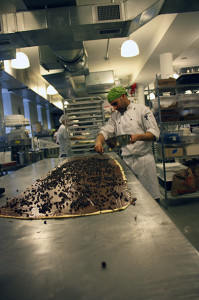
After the Nutella, Adir Michaeli adds Belgian dark-chocolate chips to the filling. Photo: Mary Wojcik
Israeli head pastry chef Adir Michaeli and the staff produces between six and 15 batches of babka a day – each batch containing 16 breads. Each step has to be carefully prepared – from the temperature of the butter, to the spreading of the filling, to the weight of each unbaked babka.
With the help of Internet exposure and with the hope of reaching a larger audience, bakeries both small and large have found a new outlet to sell babka across the country. Amazon.com sells “Lilly’s Home Style Bake Shop” chocolate babka for $9.50 plus shipping, while Green’s babkas, which are certified Kosher, sell for $8.99 plus shipping.
Hungarian-born Chana Green’s family recipe hasn’t changed since 1949, when she began baking babka and pastries out of her home. Word spread, and over the past 65 years, with the help of the Internet, her once small, family-run business has become one of the largest suppliers of babka in the United States.
Supplying Dean and Deluca’s gourmet stores, Wegman’s, Fairway, and Russ and Daughters on New York’s Lower East Side, to name a few, Brooklyn’s Greens and Ackermans Bakery, established in 1987, produces a minimum of 4,000 babka per day. Weekly taste tests ensure quality.
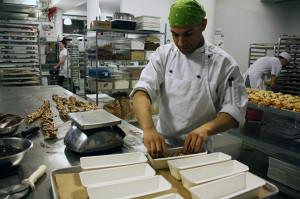
To ensure consistency, each babka dough is twisted, weighed and then put into separate containers for baking. Photo: Mary Wojcik
“We keep getting repeat customers, so we know we’re doing it the way we’re supposed to,” said Martin Werzberger, vice president of sales.
Often times, an immigrant group will slowly introduce one of their ethnic specialties into their community either through a restaurant or store. These ethnic specialties become mainstream delights as more customers order them and spread the word.
“One of the reasons that the food culture in the United States is so diverse and is so rich is that there’s been so many different ethnic groups that have come here and have embraced their food,” explained Ron Tanner, Vice President, Communications, Education, Government & Industry Relations of the Specialty Food Association.
“They’ll start with the restaurants in their own communities,” Tanner explains. “Their own communities embrace the food, and it goes out and becomes a little more mass market.”
Shloimy’s Bake Shoppe in the Borough Park section of Brooklyn, in contrast, decided not to expand, but to embrace their Jewish constituents in a neighborhood that they thought was underserved.
Waiting in line on early Friday morning, dressed in dark clothing and packed shoulder to shoulder, Orthodox residents of Borough Park scramble to purchase pastries, breads, and desserts at Shloimy’s Bake Shoppe on 12th Avenue in preparation for the weekly Sabbath.
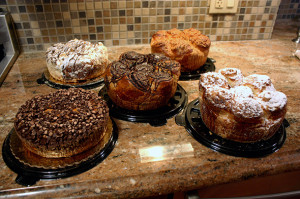
Shloimy’s Bake Shoppe in Borough Park, Brooklyn makes five different flavors of babka. From left to right: Chocolate chip, Meltaway, Chocolate, Cinnamon, and Vanilla. Photo: Mary Wojcik
Shloimy’s offers five different types of Jewish babka –chocolate, cinnamon, vanilla, melt-a-way and chocolate chip – and Matt Swerdloff, Shloimy’s public relations director, attributes the bakery’s success to two rules.
We “never serve anything that’s not homemade,” Swerdloff said. “We are all about serving the community.”
Serving one of the largest Orthodox Jewish communities in New York and international customers from Europe and Israel for over a decade, Swerdloff explained that everything in the bakery was “heimishe,” a Yiddish word meaning “homemade.” Preservatives aren’t used in any of its handmade baked goods, including the babka and kokosh cake (a version of babka). And every item is created from ethnic Jewish recipes, helping to sustain a link to Jewish tradition, culture and food.
“It’s like Jewish soul food,” Swerdloff said when asked why babka was so popular. “It makes friends. You want to know how to solve the Middle East process? You just sit them both down, you give them a little babka, a little kokosh cake, some coffee – we’ll settle all differences. I never saw two enemies staying enemies after eating babka and kokosh cake.”
Tags: Babka, chocolate, cinnamon, Jewish, kosher, Seinfeld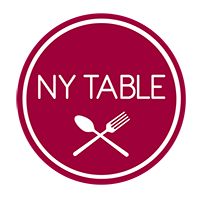
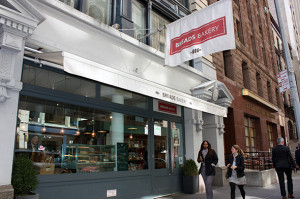
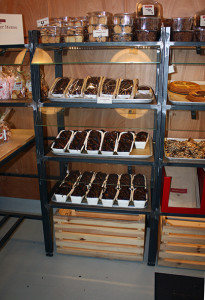
Your Comments